

慢工出细活
在瞬息万变的世界中,人们或主动或被动的追求「效率」至上,「慢」像是个缺点,是过时的传统。
In the ever-changing world, people actively or passively pursue the supremacy of “efficiency,” and “slowness” seems to be a disadvantage, considered an outdated tradition.
北京是一座快节奏城市,二环的胡同里,保留了一部分传统人居环境。一些不太「时髦」的氛围浸润着日常作息,我们的事务所也藏在其中。房檐下的家常、院子中的花木、街巷里的宁静……让人不由驻足沉思。有时看房东扫地,一上午只扫地,久而久之,院子虽简朴,却生机勃勃。这种「文火慢炖」的状态,之于时代,是难得;之于设计,是务必。
Beijing, as a fast-paced city, retains some traditional living environments within the Hutongs of the Second Ring Road. Some less “trendy” atmospheres permeate daily life, and our office is hidden among them. The everyday scenes under the eaves, the flowers and trees in the courtyard, the tranquility in the streets and alleys… all make people pause and contemplate. Sometimes, watching the landlord sweep the floor, spending the whole morning on just that, the courtyard, while simple, becomes vibrant over time. This “slow simmering” state is rare in this era; in the field of design, however, it is essential.
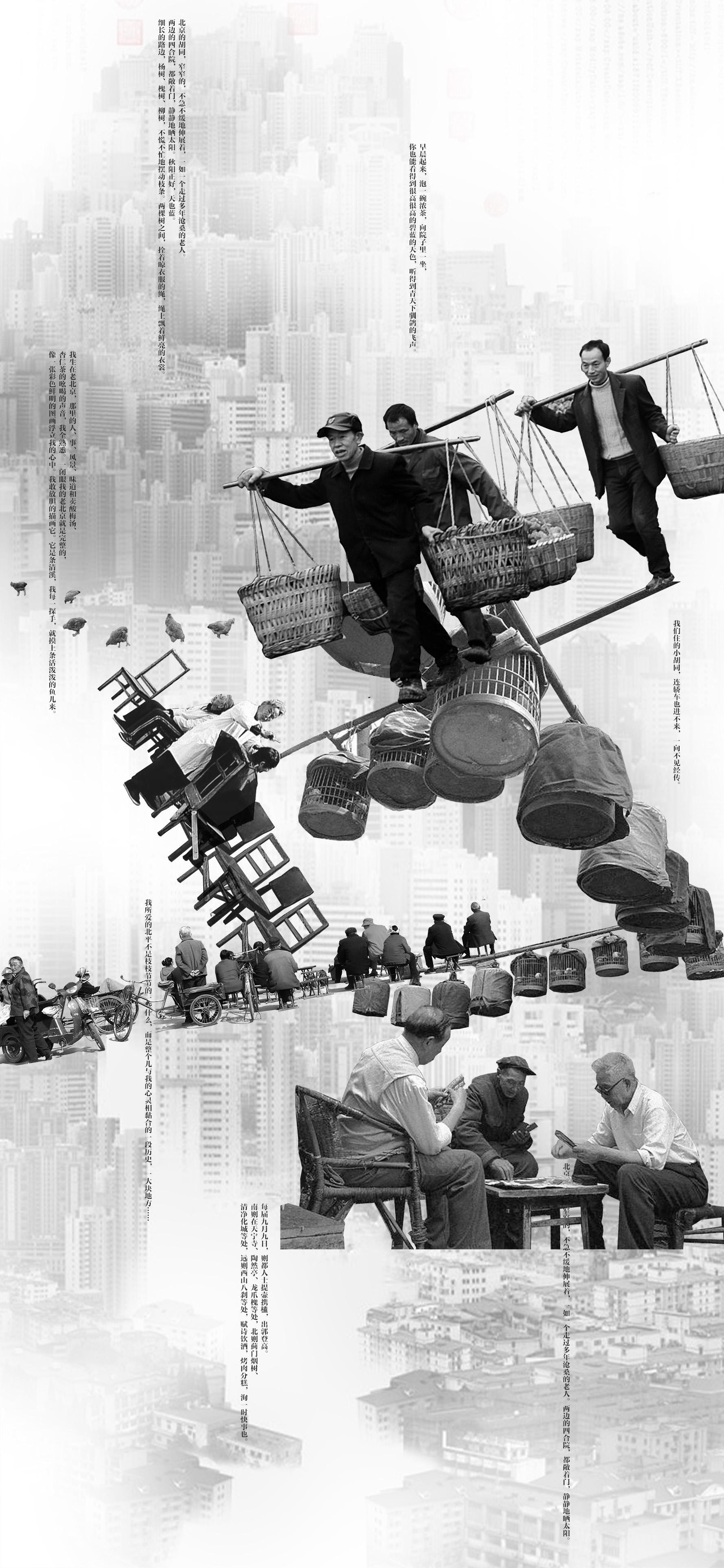
如何用设计体现好设计应该是「慢工出细活」的?我们做了这样的尝试,用策展理念设计一个展览空间。「慢」是可以被铭记的传承、被感染的情绪、被物化的手工,而传承、情绪、手工在任何时代都是永恒存在的,也是好设计该有的核。因此空间设计围绕三个「永恒」展开,描述「慢」状态,这也是行十秉持的创作初心。
How to embody the idea that good design should involve “taking time for fine work”? We made such an attempt by applying a curatorial concept to design an exhibition space. “Slow” is a legacy that can be remembered, an emotion that can be evoked, and a craftsmanship that can be materialized. Heritage, emotion, and craftsmanship are timeless elements present in any era and are essential cores of good design. Therefore, the spatial design revolves around three “eternals,” depicting the state of “slow,” which is also the creative principle upheld by our team.
传承永恒
Heritage Eternal
平面布局、空间和产品设计,均有采用圆、方、三角的造型元素。它们曾被赋予过诸多文化意蕴,我们借用其象征认知由「混沌」至「理性」、从「无序」到「有序」的意义。这是「慢工出细活」展览想表达的主旨。
The graphic layout, spatial design, and product design all incorporate elements of circles, squares, and triangles. These shapes have been endowed with diverse cultural connotations, and we borrow their symbolic significance to represent the cognitive journey from “chaos” to “reason,” and from “disorder” to “order.” This is the essence that the “Taking Time for Fine Work” exhibition seeks to convey.
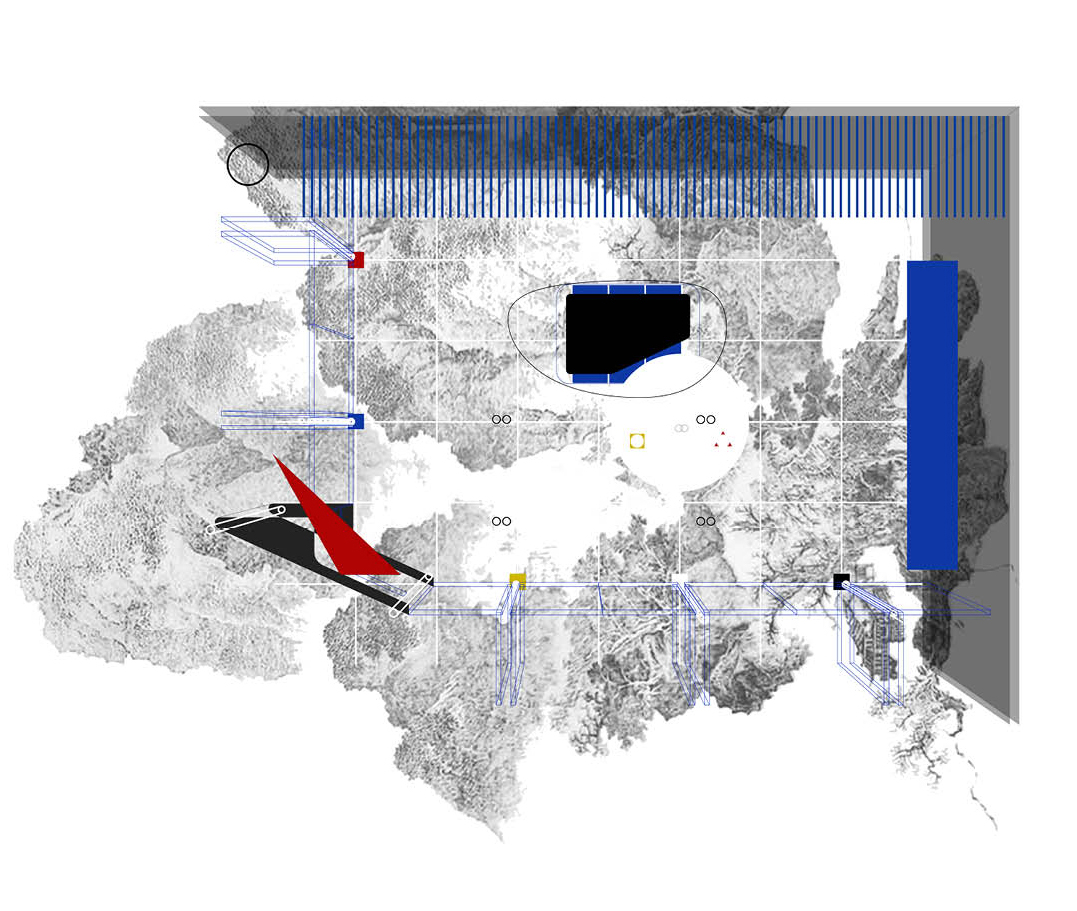



天花做镂空处理,与圆、方、三角的孔洞同为光源。格栅形态与屏风呼应,顶光透过格栅照入,光影交织在空间中,仿佛天光洒进,解决照明问题的同时,营造漫游的氛围感。
The ceiling features perforations, serving as light sources along with the circular, square, and triangular openings. The grid pattern corresponds to the screen, and the overhead light filters through the grid, casting interwoven light and shadow in the space. It creates an atmosphere as if natural light is streaming in, addressing lighting needs while fostering a sense of meandering ambiance.
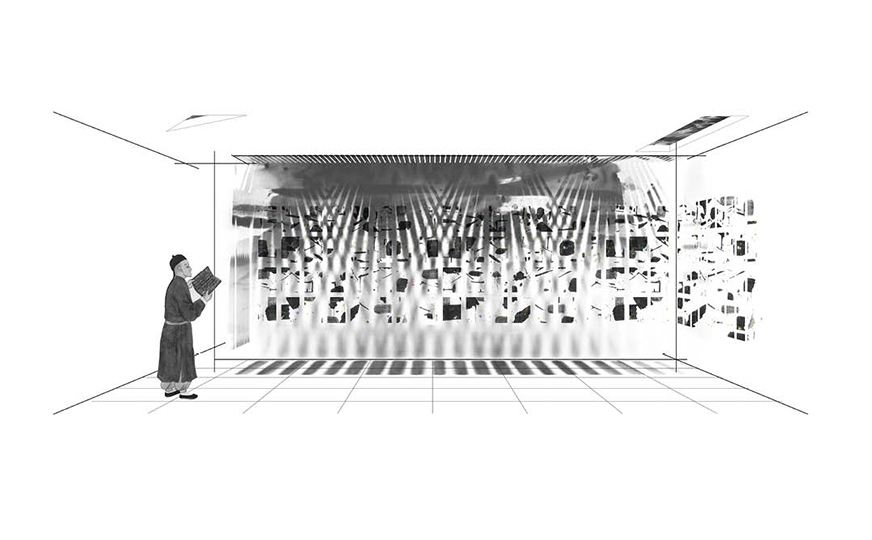

展厅整体色调以白色为基地,轻缀蓝、红、黄、白、黑五色,象征五行中的木、火、土、金、水。五行相互促进与制约,是事物运行规律,欲速则不达,呼应空间主题。
The overall color scheme of the exhibition hall is based on white, with subtle accents of blue, red, yellow, white, and black, symbolizing the five elements of wood, fire, earth, metal, and water. The interplay of these five elements, mutually promoting and restraining each other, represents the natural order of things. Embracing the theme of the space, it reflects the idea that haste may hinder, as things operate according to their own inherent principles.
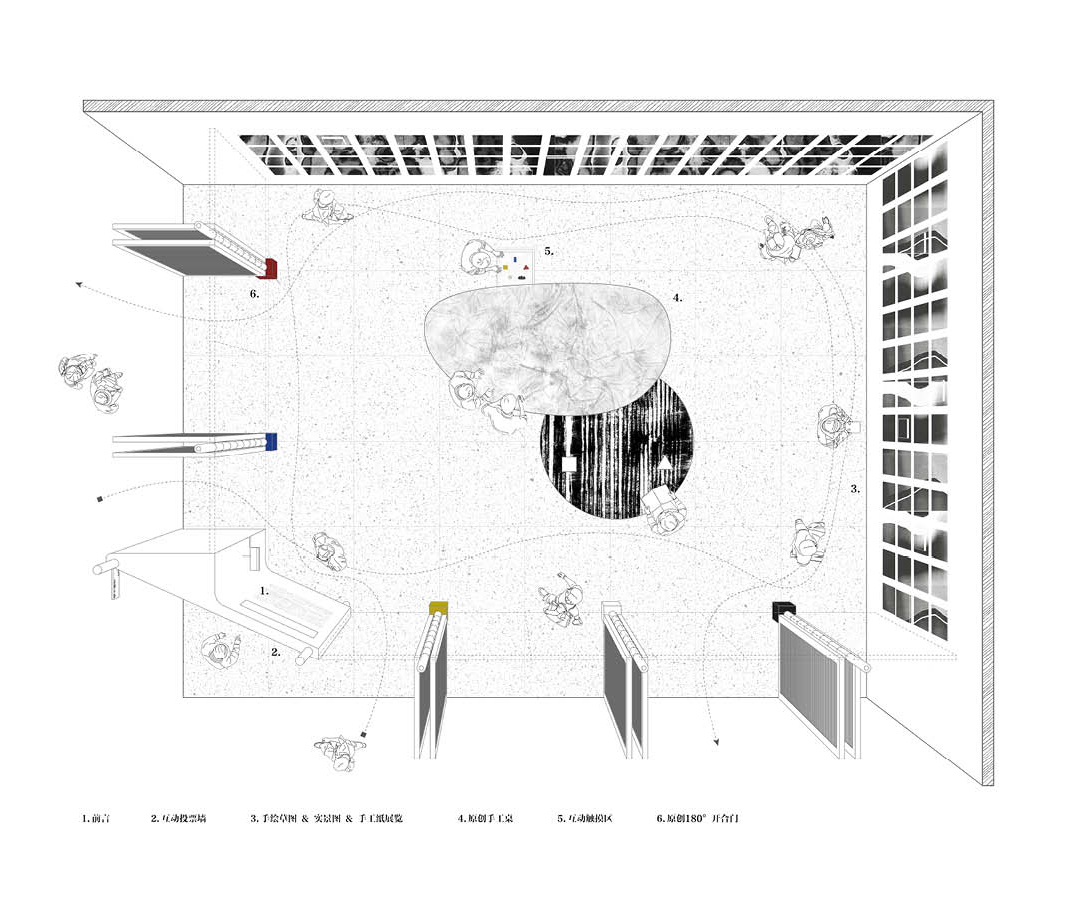

视觉艺术品牌 P9 demension 对「五行」做了符号化演绎,并形成本次展览的 VI 系统。
The visual arts brand P9 Dimension has symbolically interpreted the concept of the “Five Elements” and has developed the VI (Visual Identity) system for this exhibition based on that interpretation.

情绪永恒
Eternal Emotions
展览形式有实物交互、影像声音、视觉艺术等。屏风是主体展品之一,也是展厅边界。开门、关门均是不同的空间体验。开合的格栅门片营造遥相呼应的氛围,串联内外场景。观众围绕屏风在展厅中穿梭游走,感受光影穿透,阅览含蓄的作品,仿佛古人游园一般,脚步不自觉的会慢下来。
The exhibition takes various forms, including physical interaction, audio-visual elements, and visual arts. One of the main exhibits is the screen, which also serves as the boundary of the exhibition hall. Opening and closing the doors provide different spatial experiences. The grid-like doors, when opened or closed, create an atmosphere of distant resonance, connecting the interior and exterior scenes. Visitors navigate through the exhibition hall around the screen, experiencing the play of light and shadow, engaging with subtle artworks. It’s as if, akin to ancient wanderings in a garden, their footsteps unconsciously slow down.
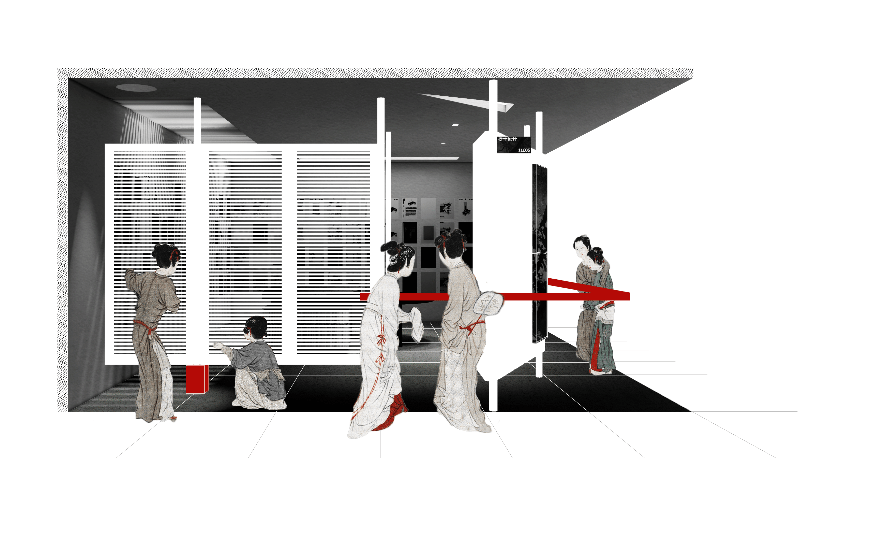


展厅入口墙面设置互动问答区和视觉艺术区。观众可以用贴纸的形式留下自己对「慢」的理解。由此,展览不是被动接受展示,也与观者有了更深入的联结。参与者还会收获展览衍生品作为纪念。
The entrance wall of the exhibition hall features an interactive Q&A area and a visual arts section. Visitors can express their understanding of “slow” by leaving stickers with their thoughts. In this way, the exhibition is not just a passive presentation; it establishes a deeper connection with the audience. Participants also receive exhibition-related merchandise as souvenirs, enhancing their overall experience.

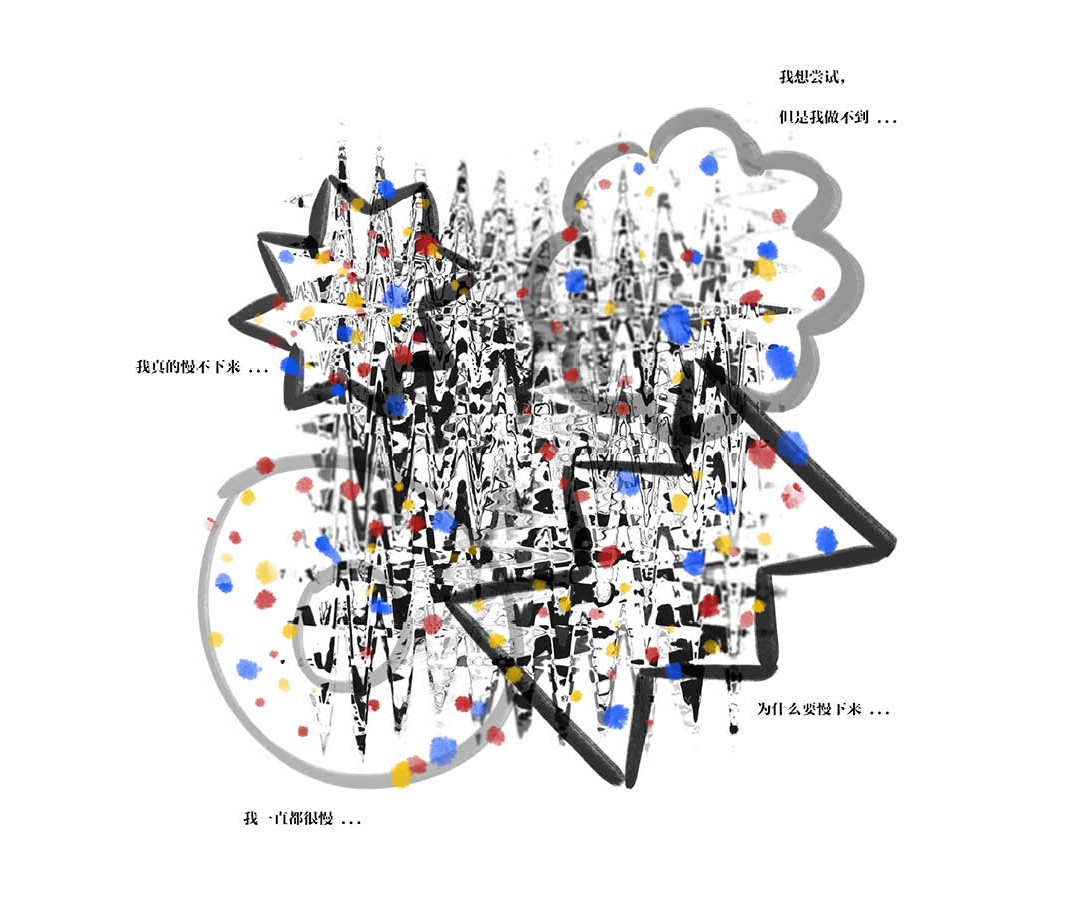

我们邀请艺术家为展览定制创作了视觉艺术作品。既是对展品的动态拆解,也为观者呈现了生动立体的视觉体验。
We invited artists to custom-create visual artworks for the exhibition. These works dynamically deconstruct the exhibits and present viewers with a vivid and three-dimensional visual experience.
内侧墙体展示了我们从胡同里采集的景象和声音。忙碌让人们常常忽略体悟自然和日常,当它们以影像和音频的形式走进展厅,被强化为「作品」后,可以有力的唤起观者的「慢」情绪。
The inner wall showcases scenes and sounds collected from the hutongs. The busyness of life often causes people to overlook the appreciation of nature and the everyday. When these moments are brought into the exhibition hall in the form of images and audio, elevated to the status of “artworks,” they can powerfully evoke a sense of “slowness” in the viewers.


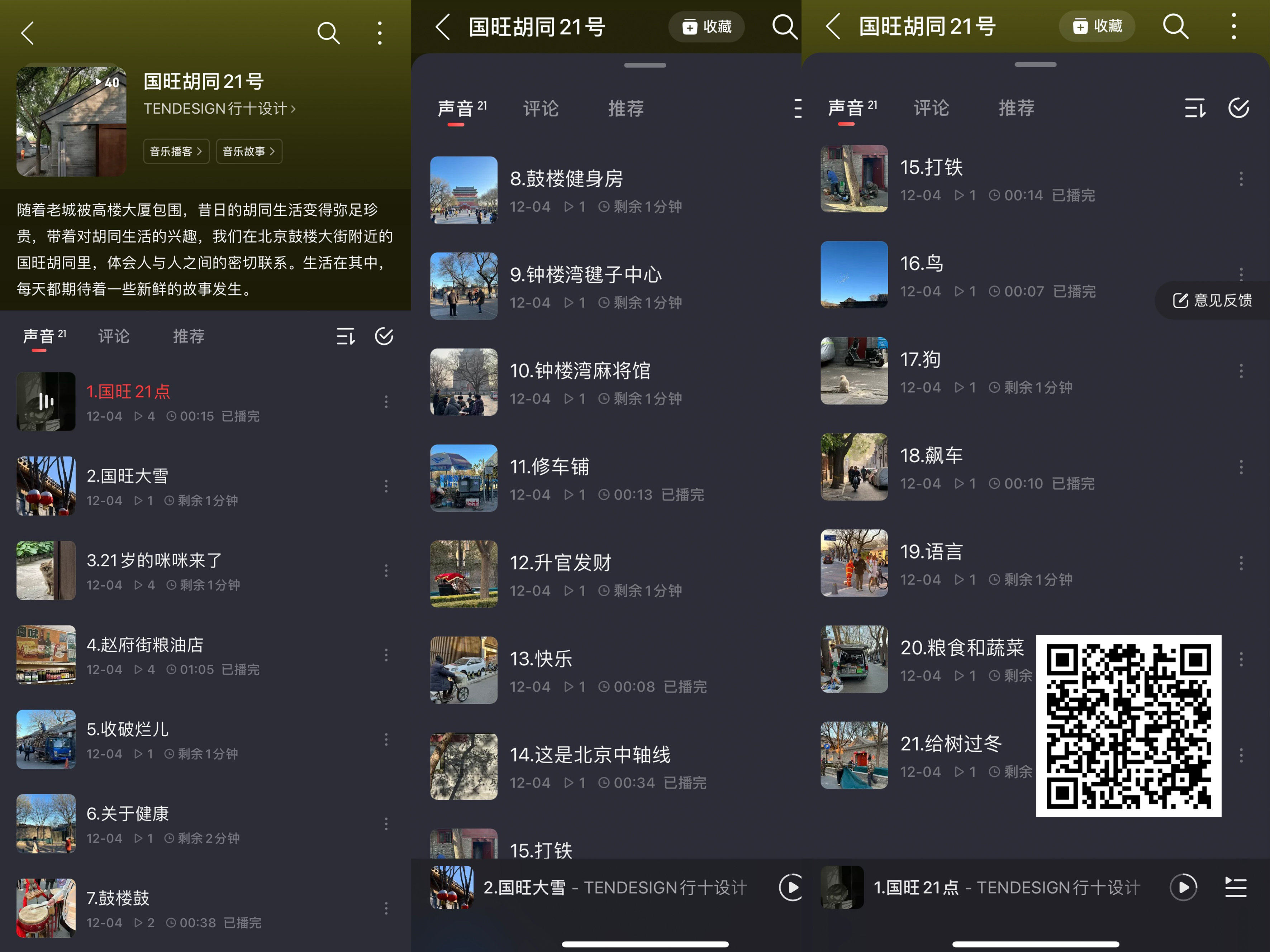
手工永恒
Handcraft Eternal
主体展示的两件展品,是基于行十设计创办以来,近百个实操案例凝集而成的产品设计,也是行十设计旗下产品研发品牌 TEN SLOW 的两件首发品。
The two main exhibits on display are products derived from the accumulation of practical experience from nearly a hundred cases since the founding of TEN DESIGN in our product design. They also mark the debut of two products from TEN SLOW, the product development brand under TEN DESIGN.
主体展品一:餐岛一体由桌面、台面、收纳构成。水墨配色经久耐看,空间适配度高。使用功能完备的基础上,异形设计形成了趣味的环绕动线,非常适合大平层空间。
Main Exhibit 1: The integrated dining island is composed of a tabletop, countertop, and storage. The enduring and visually appealing ink wash color scheme, combined with its high adaptability to various spaces, makes it a versatile piece. Beyond its functional completeness, the unconventional design creates an interesting and engaging flow, making it particularly suitable for spacious, open – floo r environments.


黑橡木桌面上,以平碰工艺镶嵌洞石。岛台台面和桌脚同样选用灰洞石,台面做封孔处理。侧抽和柜体由白松木经热弯工艺制成。定制的洞石插座,与整体风格统一。底部内嵌灯带,辅助照明。整体由高定品牌 GRANVISTA非标制作。搭配意大利顶级灯光品牌 Viabizzuno 的灯具及凝具创始人江柏明和艺术家文涛联合创作的古墨墩,简约含蓄的设计与展品气质相得益彰。
On the black oak tabletop, Dòngshí stones are inlaid using flat – penetration craftsmanship. The island’s countertop and table legs are also made of grey Dòngshí stones, with the countertop treated for hole sealing. The side drawers and cabinets are crafted from white pine using a heat – bending technique. Custom – designed stone sockets seamlessly blend with the overall style. Built – in LED strips on the bottom provide supplementary lighting. The entire piece is crafted by the high – end brand GRANVISTA. Complemented by light ing fixtures from the top Italian brand Viabizzuno and a collaboration between the founder of NING Art Concrete, Jiang Boming, and the artist Wen Tao, the minimalistic and understated design harmonizes perfectly with the character of the exhibit.


展览时,观者被邀请零距离亲手触碰展品,感受细腻的手工痕迹,体验高定质感。
During the exhibition, viewers are invited to get up close and touch the exhibits, feeling the delicate craftsmanship and experiencing the high – end texture firsthand.

主体展品二:屏风。古时,屏风是名位和权力的象征。流传到民间后一直延续至今。有屏的空间隔而不绝,境气质也会得以提升,在办公、会所、大宅空间的设计中很适用。我们为许多私人业主定制设计过屏风,本次展出的产品基于过往多次实践。转轴底座形变于中国传统建筑构件「柱础」,造型沉稳;横格栅门片简约百搭。底部安装磁吸插销,通过手工调试后,可以确保门片的精准定位和流畅开关。传统意蕴与现代工艺相融,形成适配更多空间调子的产品设计。
Main Exhibit 2: The Screen. In ancient times, screens were symbols of status and power, a tradition that has persisted in folk culture to this day. Spaces with screens exhibit a distinctive charm, enhancing the overall ambiance, making them well – suited for office spaces, clubs, and grand residences. We have custom – designed screens for many private clients, and the product showcased in this exhibition is based on extensive practical experience. The rotating base is a variation of the traditional Chinese arch itectural element “column base,” offering a stable and dignified appearance. The horizontal grid like doors are versatile and minimalist. The bottom features magnetic locking pins, ensuring precise positioning and smooth opening and closing after manual ad justments. The fusion of traditional symbolism and modern craftsmanship results in a product design that adapts to a variety of spatial tones.
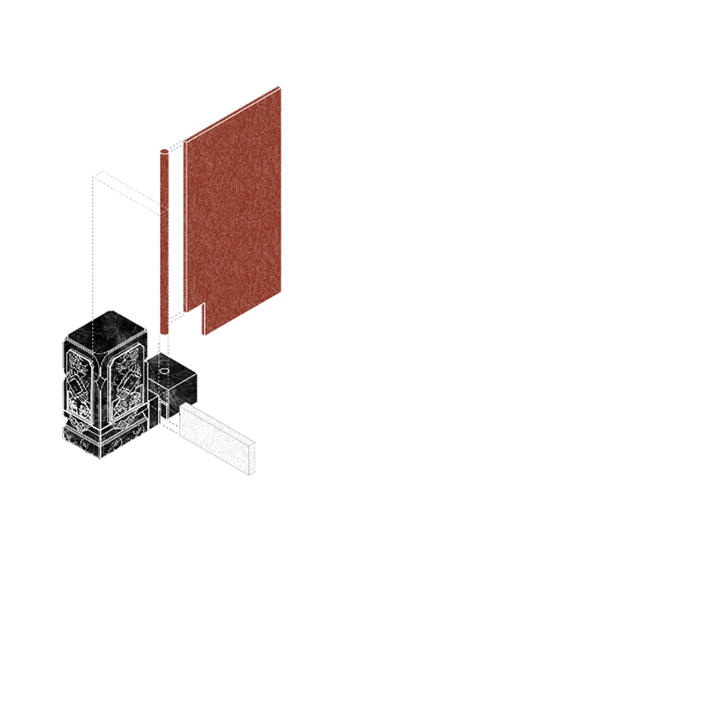
在现场,观者可以透过屏风看到另一头的人影绰绰,游走其间,充分体验空间状态。
At the venue, viewers can peer through the screen and see the silhouettes of people on the other side. By wandering through, they can fully experience the spatial dynamics created by the screen.



墙面展示了我们过往设计工作中所沉淀的多种素材。每一帧画面背后都是珍贵的匠心历程和设计故事。「慢工出细活」的精神跃然纸上,展览主旨得以传递,亦是一种有温度的饰面材料。
The wall showcases a variety of materials accumulated from our past design work. Behind each frame is a precious journey of craftsmanship and a design story. The spirit of “Taking Time for Fine Work” vividly comes to life on paper, conveying the exhibition’s theme and serving as a warm and meaningful decorative element.
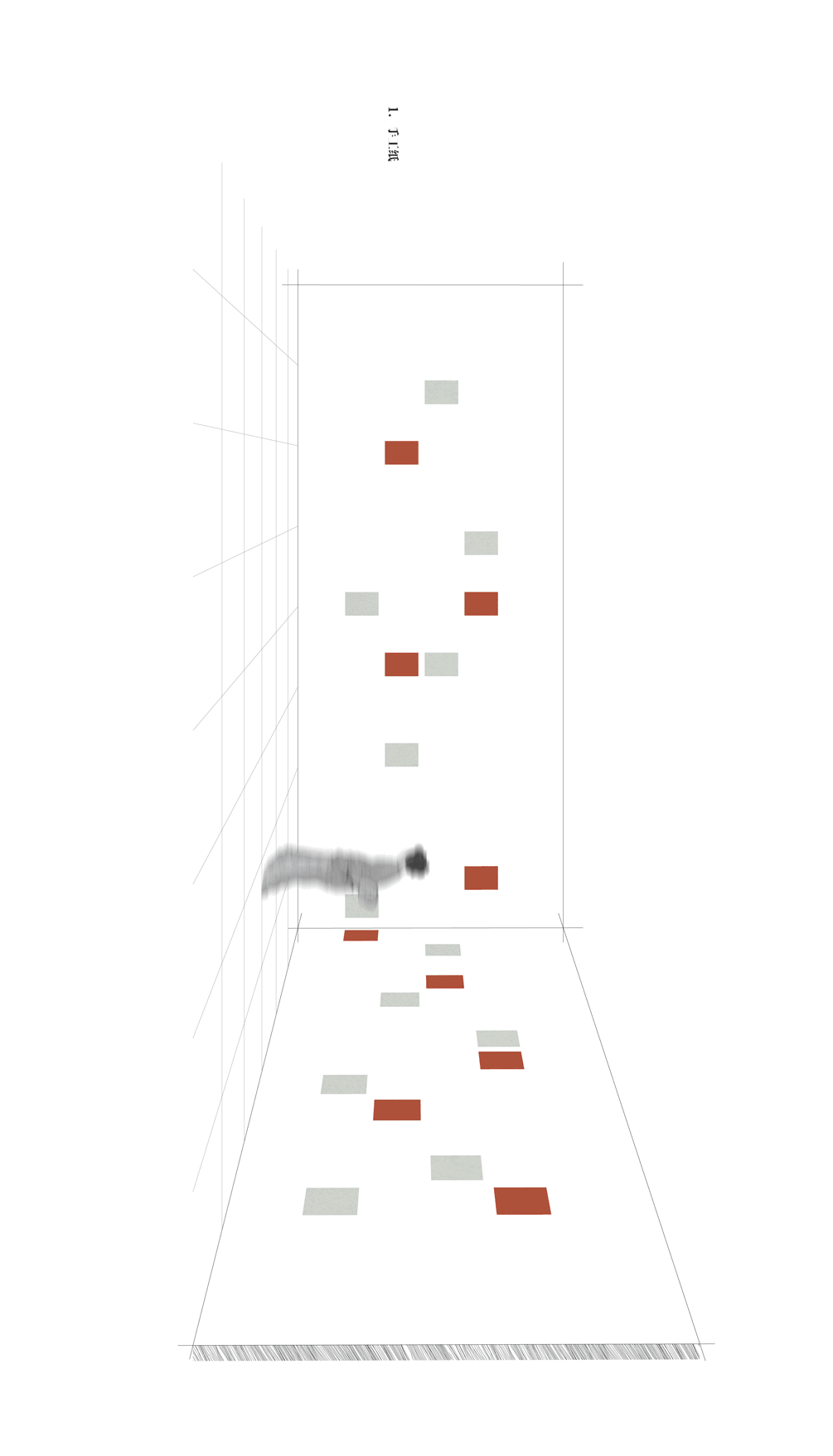



以上为「慢工出细活」展览的策展理念和空间设计详解,希望有为观者建立起一个回忆传承、打开情绪、触碰手工的场,体悟「慢」的价值。展览是行十品牌创办以来的阶段总结,亦是在空间和产品设计上践行的方法论:慢工出细活,久久方为功。
The above is a detailed explanation of the curatorial concept and spatial design for the “Taking Time for Fine Work” exhibition. We aim to create a space that serves as a memory repository, evokes emotions, and allows tactile engagement with craftsmanship, fostering an appreciation for the value of “slowness.” The exhibition serves as a phase summary since the inception of the TEN DESIGN brand, embodying a methodology in both spatial and product design: taking time for fine work yields lasting results.
作品名称|慢工出细活
展览地址|中国 广州
规划面积|48 ㎡
完成时间|2023 年 12 月
展览发起/空间设计丨行十设计
策展人丨张威
特邀视觉艺术品牌丨 P9 Dimension
产品制作支持丨 GRANVISTA
摄影|ACT STUDIO
Title of the Work | Taking Time for Fine Work
Exhibition Venue | Guangzhou, China
Planned Area | 4 8 ㎡
Completion Date | December 2023
Exhibition Initiator / Space Design | TEN DESIGN
Curator | Zhang Wei
Special Invited Visual Arts Brand | P9 Dimension
Product Production Support | GRANVISTA
Photography | ACT STUDIO